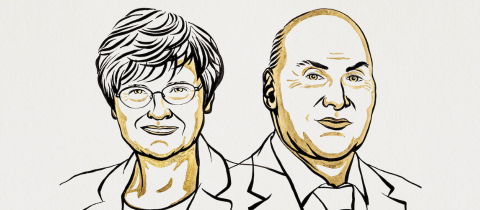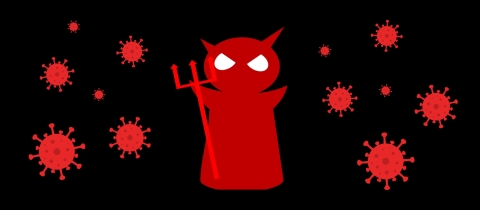Whenever the “leader of the free world” has a health issue, the media explodes with a mix of facts and conjecture. President Trump’s bout with COVID-19 has focused attention on the treatments he has received which include dexamethasone, a steroid that has a wide spectrum of uses including reduction of inflammation in the bronchi, the airways that lead from the trachea into the lungs. Dexamethasone is a “corticosteroid,” one of a number of medications that chemically resembles the hormones produced in the outer layer, or “cortex,” of the adrenal glands. Cortisone and cortisol regulate a wide range of processes throughout the body, including metabolism and the immune response as well as helping the body respond to stress.
In the 1930s Dr. Philip Hench, working at the Mayo Clinic in Rochester, Minnesota, made an amazing discovery. A patient who had been struggling terribly from inflammatory arthritis experienced relief when he developed jaundice. Hench also noted that pregnancy relieved arthritic symptoms and postulated that under these conditions the body produces some anti-inflammatory substance. He wasn’t a chemist, so he sought help from Edward Kendall, a professor of physiologic chemistry at Mayo. Kendall had been working on identifying compounds produced by the adrenal glands and had isolated several and determined their molecular structure. They were “steroids,” molecules that had a common feature consisting of four rings of carbon atoms. Bile acids and pregnancy hormones were also steroids, giving Kendall and Hench the idea of treating arthritis with adrenal hormones. By 1948, cortisone had been identified as a hormone that could reverse the downward trend in the health of animals that had their adrenals removed and became the “corticosteroid” candidate for the treatment of arthritis. Testing became possible after Kendall, with help from Lewis Sarett at Merck, developed a synthetic method to produce cortisone from ox bile.
An opportunity presented itself when a patient at the Mayo clinic refused to leave until she felt better. “Mrs. G” was treated with cortisone and within four days showed almost miraculous improvement. Her pain resolved to such an extent that she went shopping and claimed: “I have never felt better in my life.” Within months, fourteen other patients suffering from arthritis were treated with similar results. The word was out about a “miracle drug” but availability was scarce. This gave rise to a black market for fake cortisone. But by 1952, a method to produce the drug from diosgenin, a compound found in a variety of plants, had been developed and cortisone began to perform its magic on arthritis sufferers.
The miracle, however, was tainted by side effects with prolonged use. Patients suffered from periods of depression, mood changes, fluid retention, thinning of the skin and weakening of bones. The search was on to find synthetic analogues with increased efficacy and fewer side effects. One of those turned out to be dexamethasone, the drug now used to treat severe cases of COVID-19.
The discovery of diosgenin as a starting material was critical to the production of dexamethasone as well as other corticosteroids such as prednisone. That breakthrough came at the hands of a remarkable chemist, Russel Marker who was on the trail of another steroid, the pregnancy hormone, progesterone. At the time doctors were looking at progesterone as a possible preventative against miscarriage. Marker was particularly interested in sarsaponegin, a compound that had been isolated from the sarsaparilla root in 1914 and had a chemical similarity to progesterone. By 1938 the clever chemist had developed a series of reactions to convert sarsaponegin into progesterone, but the starting material was still hard to come by. Could there be some other plant that was a better source of steroids?
Marker began to look through botany texts for plants that looked like ones known to produce steroids and was taken by pictures of the Dioscorea species, named after the ancient Greek physician and botanist Dioscorides. The scientific literature revealed that a steroid known as diosgenin had indeed been extracted from these plants. He could probably convert diosgenin into progesterone, Marker thought, and began a systematic search for plants of the genus Dioscorea, hoping to find a variety that produced diosgenin in good yield. He first scoured the south-west U.S., but eventually ended up in Mexico where his efforts finally bore fruit. Actually, they bore a root. The root of a Mexican yam looked to Marker like a good candidate and he smuggled a sample back into the U.S. where analysis revealed that it did indeed contain a wealth of diosgenin.
It took Marker just five chemical steps to convert diosgenin to progesterone and eight to make testosterone, the main male hormone. Since then, a number of other plants have been found to be excellent sources of diosgenin allowing for large-scale production of steroids such as dexamethasone. The synthesis is actually a mixture of chemistry and biotechnology. While many of the steps in the conversion of diosgenin to dexamethasone are straight forward chemical reactions, a couple of critical step makes use of enzymes produced in one case by a mold that commonly grows on bread, and in the other by a bacterium found in the soil.
Dexamethasone obviously has a fascinating history and possibly an important role in the future. The British trial called RECOVERY (Randomized Evaluation of COVID-19 Therapy) has already shown that patients on ventilators given the drug have one-third fewer deaths than control subjects. Those requiring oxygen without a ventilator have twenty percent fewer deaths. Perhaps dexamethasone may even work on patients who are at an earlier stage of the disease. That is why President Trump was given dexamethasone, even though that treatment is not in step with current guidelines.







